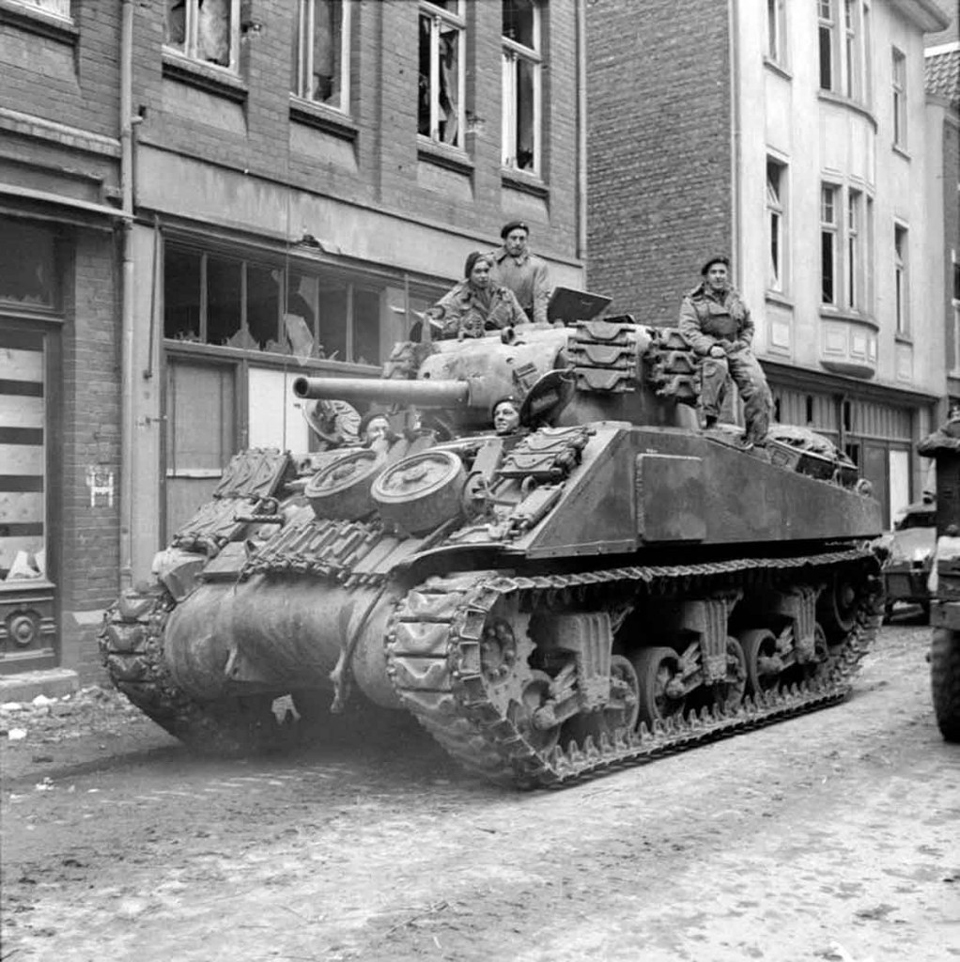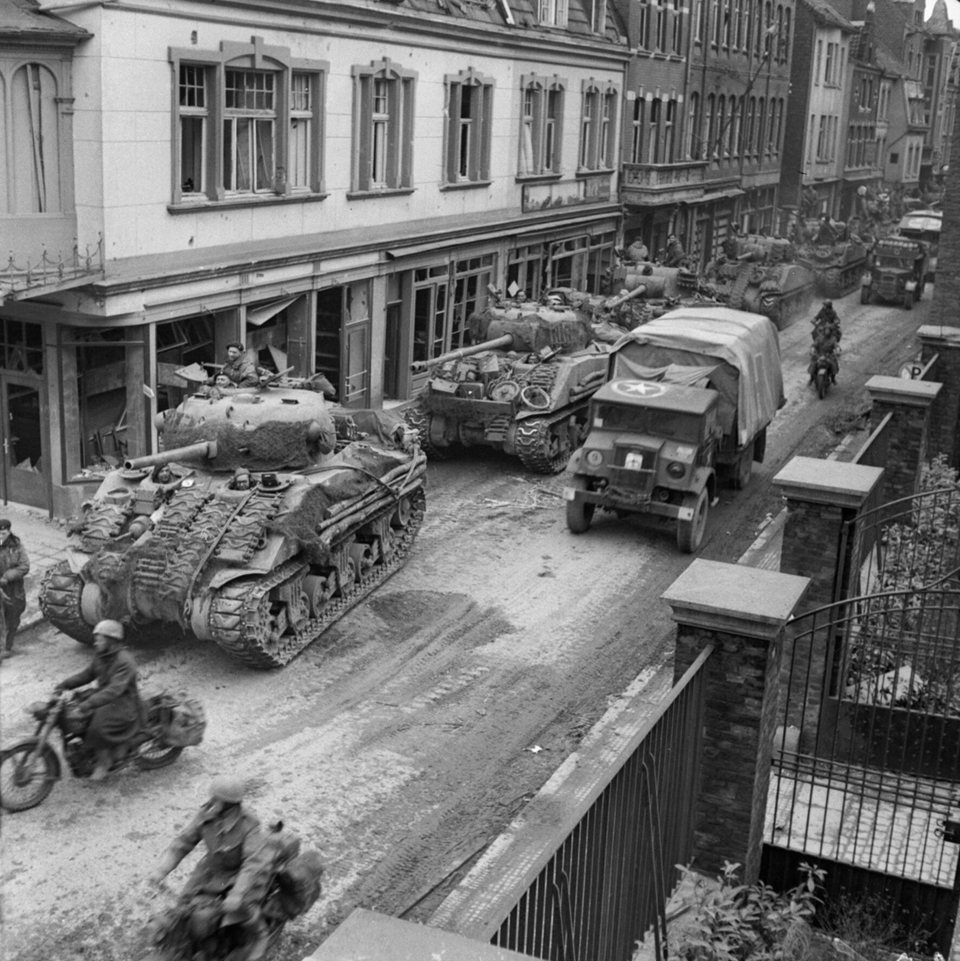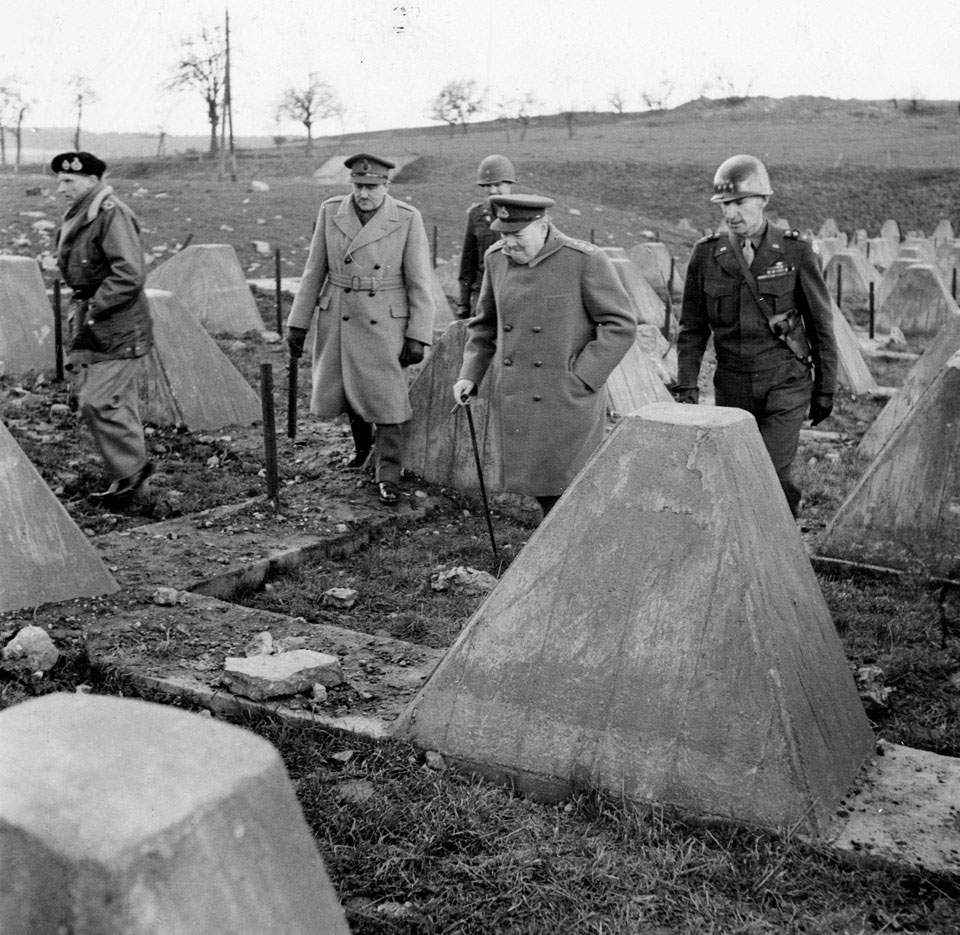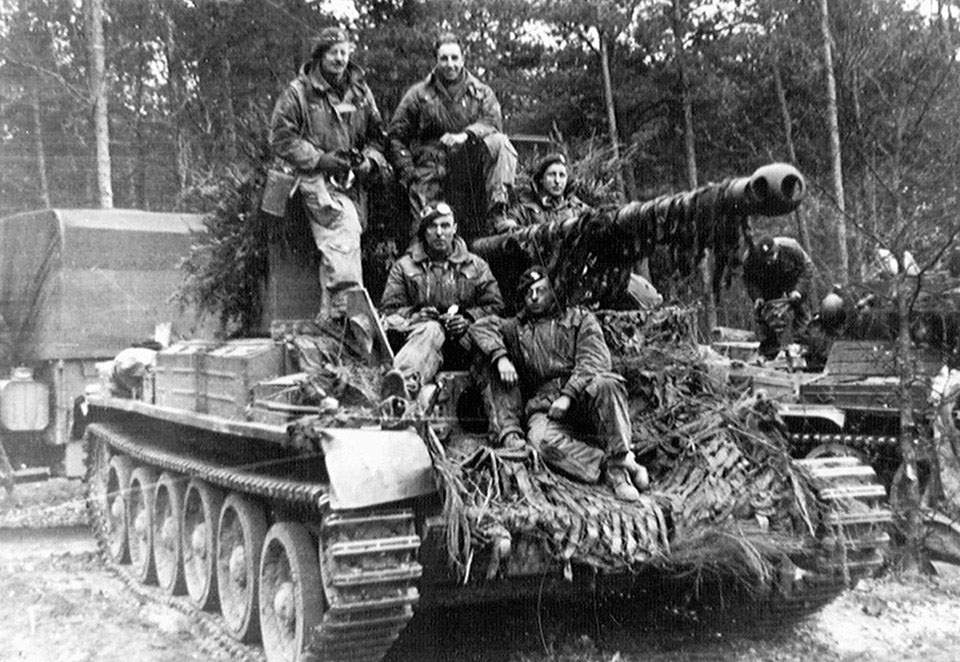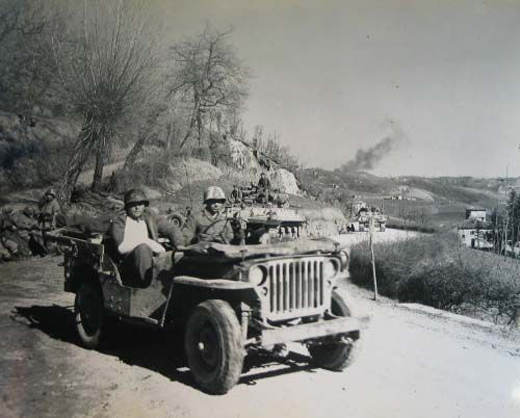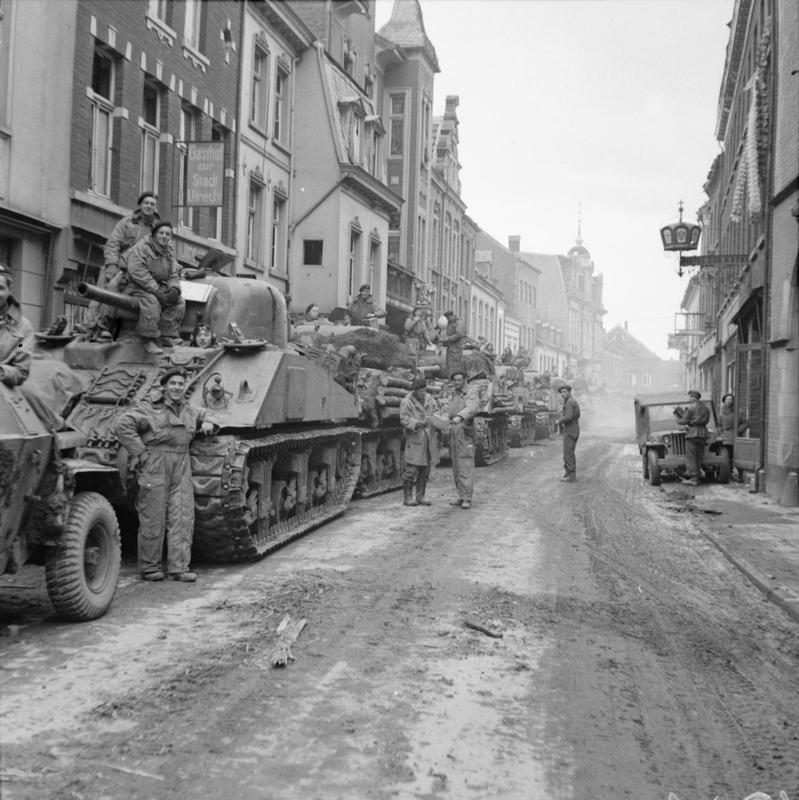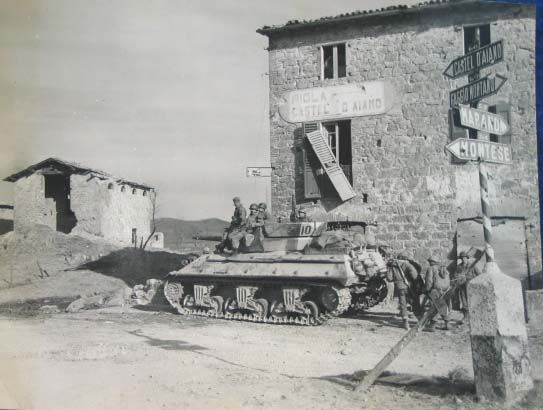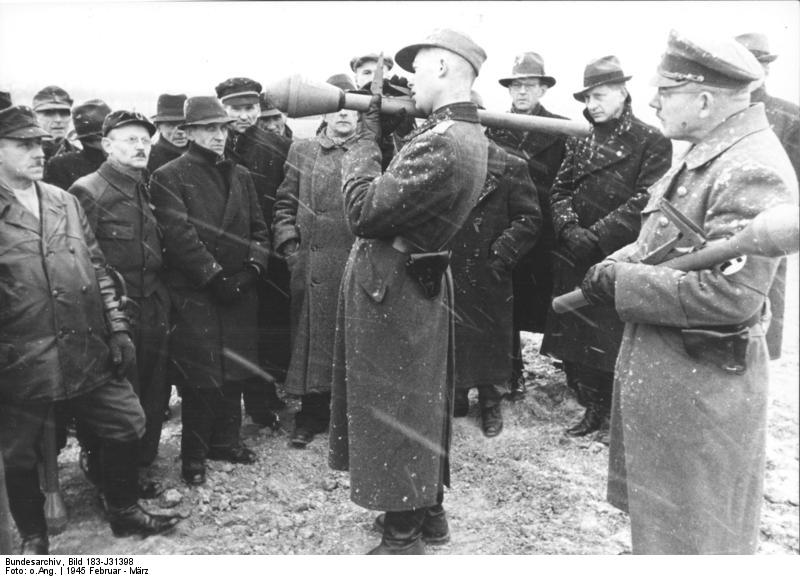Air Operations, CBI
BURMA- More than 100 10th Air Force fighter-bombers attack numerous targets in proximity to Japanese Army battle lines across central Burma.
- 4 308th Heavy Bomb Group B-24s attack shipping in the South China Sea.
- During the night, 11 XX Bomber Command B-29s staging through the airfield at Luliang sow mines in Tai-hsing Narrows and at the confluence of the Yangtze and Whangpoo rivers.
- 1 B-29 sows mines in Tungting Lake.
- 63rd Heavy Bomb Squadron SB-24s sweeping the sea lanes between Hong Kong and Swatow sink a Japanese submarine chaser.
Air Operations, East Indies
XIII Bomber Command B-24s attack airfields in northern Borneo.
[Air Operations, Europe
For the first time in 7 months German bombers attack Britain.
Synthetic oil facilities in Hamburg and Gelsenkirchen are pounded by 2,000 Allied bombers.
RAF BOMBER COMMANDDaylight Ops:
- 128 Lancasters of No. 3 Group carry out a G-H attack through cloud on Wanne-Eickel. The results are unknown.
Minor Ops:
- 31 Mosquitos are sent to Berlina, 24 to Essen and 28 in small numbers to 5 ports in northern Germany, 12 Halifaxes lay mines off Heligoland, 16 aircraft are on Resistance operations, and there are 6 Mosquito patrols.
- 2 Stirlings on Resistance flights are lost.
GERMANY:
- 223 1st Air Division B-17s attack a munitions dump at Ulm.
- 59 1st Air Division B-17s attack a marshalling yard at Ulm (secondary).
- 69 1st Air Division B-17s attack an aircraft-industry plant at Schwabmunchen.
- Unable to locate primary targets through thick cloud cover, 154 of 274 2nd Air Division B-24s and 149 of 376 3rd Air Division B-17s attack various secondaries and targets of opportunity.
GERMANY:
- Approximately 180 9th Ar Division bombers attack rail targets and communications centers, but most 9th Air Force fighters and fighter-bombers are grounded by bad weather.
ITALY:
- 12th Air Force B-25s attack rail bridges at seven locations.
- XXII TAC P-47s attack bridges and roads.
- During the night, XXII TAC A-20s and A-26s attack lines of communication in the Po River valley.
AUSTRIA:
- 15th Air Force heavy bombers attack marshalling yards at five locations.
- 15th Air Force heavy bomers attack a marshalling yard at Szombathely, and two marshalling yards at Sopron.
- 15th Air Force heavy bombers attack a marshalling yard at Ljubljana and two marshalling yards at Zagreb.
Air Operations, Japan
- 192 XXI Bomber Command B-29s are dispatched on a precision daylight bombing attack against an aircraft factory in Tokyo. Due to heavy cloud cover over the target, 159 of the B-29s attack the Tokyo city area and 18 B-29s attack various alternate targets. This is the final daylight precision bombing mission mounted by B-29s against the Japanese aircraft industry.
- 1 B-29 is lost.
Air Operations, Pacific
192 B-29 Superfortress bombers of the US XXI Bomber Command bomb the Musashino aircraft factor in Tokyo. This is the last 'precision bombing' by the Americans who now go over to carpet bombing.
The first damaged B-29 uses a landing field on Iwo Jima.
[Air Operations, Philippines
- 494th Heavy Bomb Group B-24s attack the Likanan and Sasa airfields on Mindanao and Zamboanga City.
- 42nd Medium Bomb Group B-25s and 347th Fighter Group P-38s attack targets throughout the Zamboanga area.
- V Bomber Command B-24s attack numerous targets on Luzon.
Air Operations, Volcano Islands
- Task Group 52.2 TBMs and FMs provide support for US V Marine Amphibious Corps ground forces on Iwo Jima.
- VMR-952 R5Ds and 9th Troop Carrier Squadron C-46s air-drop more than 50 tons of supplies to V Marine Amphibious Force units on Iwo Jima.
- VC-84 TBMs spray Iwo Jima with DDT.
- A 9th Very Heavy Bomb Group B-29 makes an emergency landing at Motoyama Airfield No. 1 on Iwo Jima, the first landing of its kind. This is precisely the purpose to which the bloody Iwo Jima invasion has been directed, saving B-29 crewmen who might otherwise have perished in battle-damaged airplanes.
Battle of the Atlantic
U-3508 is sunk at Wilhelmshaven during an attack by B-24s of the US 8th Air Force.
| Class | Type XXI |
| CO | Kapitänleutnant Detlev von Lehsten |
| Location | North Sea, Wilhelmshaven |
| Cause | Air attack |
| Casualties | Unknown |
| Survivors | Unknown |
Burma
In the British IV Corps sector, the 17th Indian Div occupies part of the town of Meiktila, a very important objective on account of its 8 airfields. After 3 days of heavy fighting, 2,000 Japanese are dead. The Japanese 15th and 33rd Armies are now trapped at Mandalay.
[Diplomatic Relations
(3rd?)Finland declares war on Germany although an unofficial state of hostilities has existed since September 1944.
[Eastern Front
Bitter fighting continues at Breslau where the center of the city is shelled by Russian 400-mm guns.
Troops of the 1st Belorussian Front force the Vistula Army Group to retire northeast of Stettin (Szczecin), and take Regenwalde (Resko). The X SS Corps suffers heavy losses. Further east the Russians take Rummelsburg (Miastko). In this sector the Germans even send the 600th Russian Div into the line, under the command of Gen Andrei A. Vlassov, who went over to the Germans after being taken prisoner.
In East Prussia the Russians also attack Königsberg from the north for the first time.
In Norway, the German 7th and 199th Mountain Divs attempt a retreat south through snowstorms.
GERMANYThe Soviet 1st Guards Army and Polish 1st Army have reached the Baltic; X SS Corps is being degraded at Dramberg and the Soviet 61st Army has captured Stargard. At Lauban, the XXIV Panzer Corps is still attacking the 3rd Guards Tank Army.
CENTRAL SECTORThe 1st Guards Tank Army reaches the Baltic coast near Kolberg. Elements of the 1st Polish Army link up with the tankers to invest the garrison of 3,200 soldiers and 68,000 civilians. Regenswalde also falls as the X SS Corps fights for its survival around Dramberg. Stargard falls to the 61st Army.
The XXIV Panzer Corps draws closer to Lauban, inflicting heavy losses upon the 3rd Guards Tank Army.
[Italy
The IV Corps, US 5th Army, continues its offensive, reaching Monte Acidola, Monte della Croce and Madonna di Brasa. On the right flank of the Allied line, V Corps of the British 8th Army, the Cremona combat group enters Torre di Primaro.
[Pacific
- The US submarine Baya (SS-318) attacks a Japanese convoy off Cape Varella, French Indochina, and sinks the merchant tanker Palembang Maru (5236t).
- The US submarine Tilefish (SS-307) sinks the Japanes fishing vessel Shiko Maru off Setsuko Saki.
- The British submarine Clyde sinks the Japanese auxiliary submarine chaser Kiku Maru (233t) off western Sumatra.
- The British submarines Trenchant and Terrapin sink the Japanese submarine chaser CH-8 in central Malacca Strait.
Philippines
The Americans prepare to attack the Japanese defensive line, the Shimbu line, east of Manila.
The 1st Brigade Combat Team of the 1st Cavalry Division clears the last Japanese strongpoints in Manila after a nine-day battle to clear the government buildings outside of Intramuros. Japanese casualties are estimated at over 16,000. US casualties are 1,010 dead and 5,565 wounded. At least 100,000 Filipinos have been deliberately killed by the Japanese.
The 6th Infantry Division of XIV Corps pushes the Japanese off the crest of Mount Pacawagan.
[Western Front
In the Canadian 1st Army sector, ther 43rd Div, Canadian II Corps, thrusts southeast toward Xanten, while the other 2 divisions in the Corps, the Canadian 2nd and 3rd, complete the capture of the Hochwald and Balberg Forests. On the army's right flank, the 53rd Div, British XXX Corps, captures Geldern and makes contact there with the 35th Div of the US XVI Corps, US 9th Army.
Repelen falls to the 5th Arm Div of the XIII Corps, US 9th Army, which succeeds in cutting the road linking Rheinberg with Mörs. The 2nd Arm Div captures Kaldenhausen and completes mopping up in the area between Ürdingen and Vietelsheide, bringing operations in the Cologne lowlands to a close.
The 99th Div, VII Corps, US 1st Army, continues to advance northeast along the Erft, but is halted just past the confluence of the Erft and the Rhine, on the line Derikum-Ükrath. The 104th Div forces a way into the outer defenses of Cologne. In the III Corps sector, while the 1st Div establishes a bridgehead over the Erft, the 9th Div takes Derikum and Hausweiler on the east bank of the river. The 87th Div and 4th Div, VIII Corps, US 3rd Army, resume their advance, while the XII Corps divisions extend and reinforce their bridgeheads over the Kyll River.
[Images from March 4, 1945
|
|
|
|
|
|
|
|
